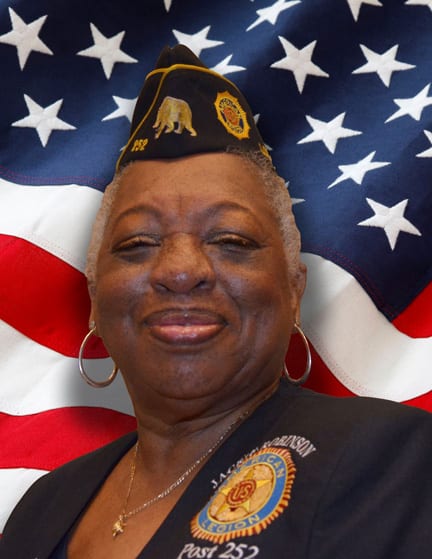Refusing to be silenced: Can You Hear Me Now?
By Patricia Jackson- Kelley, Jackie Robinson Post 252

 African American women played major support roles. For example, Phyllis Wheatley used her literary and artistic talent to help the cause of the abolition movement. She became the first American slave, the first person of African descent, and only the third colonial American woman to have her work published.
African American women played major support roles. For example, Phyllis Wheatley used her literary and artistic talent to help the cause of the abolition movement. She became the first American slave, the first person of African descent, and only the third colonial American woman to have her work published.The history of Women’s History Month goes back to 1978 in California at the Sonoma School District that participated in Women’s History Week. During the week of March 8. This became International Women’s Day each year, and they adopted the color purple, my favorite color, to symbolize women. At that time, the participants of the California School District engagement appeared irrelevant. On July 13, 1979, there were 2- two-week-long conferences, and they decided to create a National Women’s History Week. Their work made it to the White House, and a month later, President Jimmy Carter proclaimed March 8, 1980, as National Women’s History Week.
Women owe a debt of gratitude to the National Women’s Project, who petitioned Congress in 1987 to establish a Women’s History Month, which marginalized when public law 100-09 was passed. Women’s History Month is celebrated by individuals, organizations, and schools all around the nation.
The National Women’s History Alliance selected and announced the yearly theme. The theme for Women’s History Month in 2021 captures the spirit of these challenging times. Since most of the Women’s Suffrage Centennial celebration initially scheduled for 2020 was curtailed, the National Women’s History Alliance is extending the annual them for 2021 to Valiant Women of the Vote: Refusing To Be Silenced. Women have progressed in recent years; we are “breaking glass ceilings”; however, our Vice President Kamla Harris shattered the glass ceiling. As a proud Afro-American, I view this Women’s History Month as EXCEPTIONAL. She is the United States’ First Female Vice President and the First African American, and First Asian American.
As we celebrate Women History Month, we must not become complacent. We must celebrate the achievements that women have fought so hard to achieve and commit to facing many of the challenges we still face.













